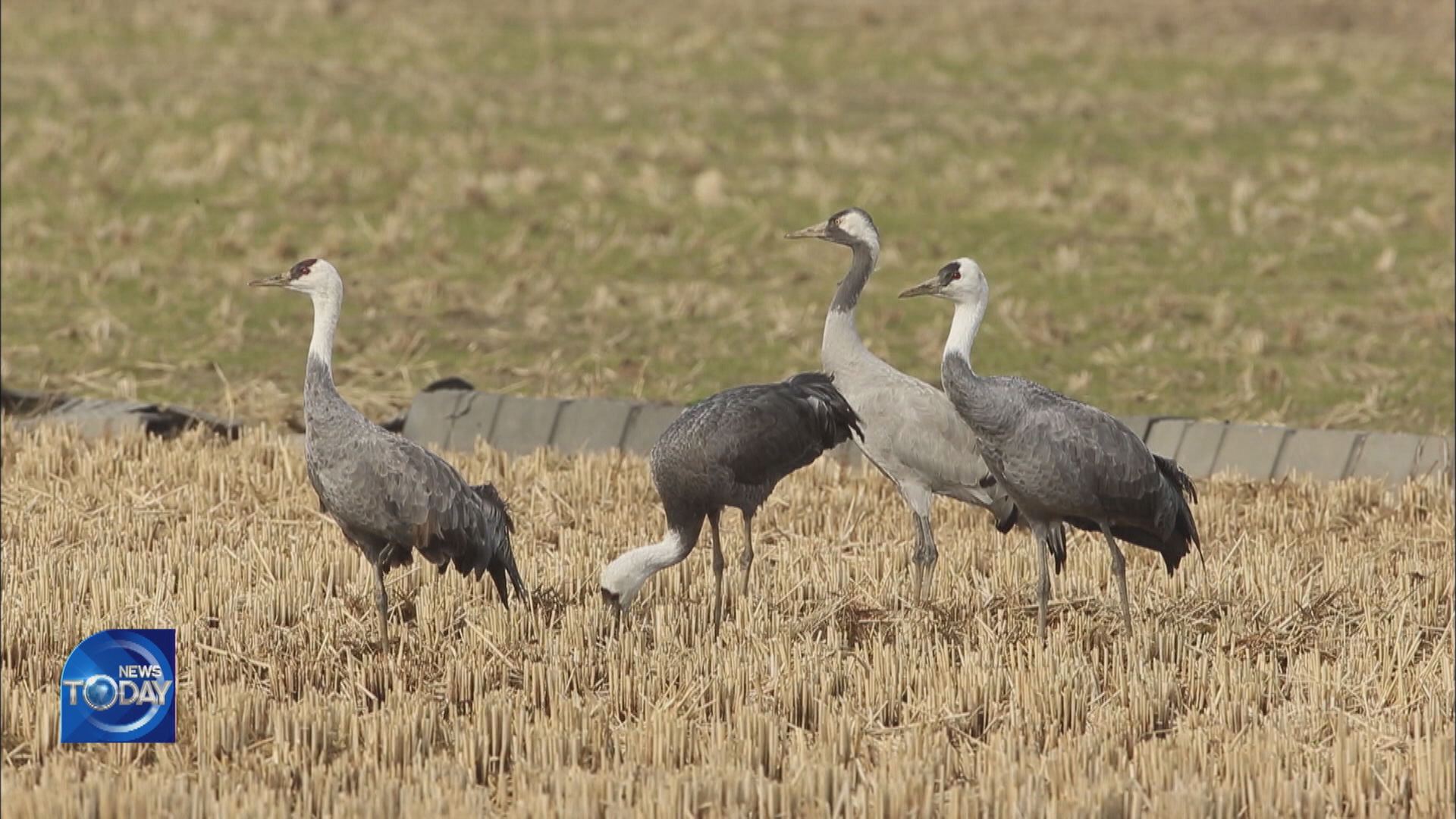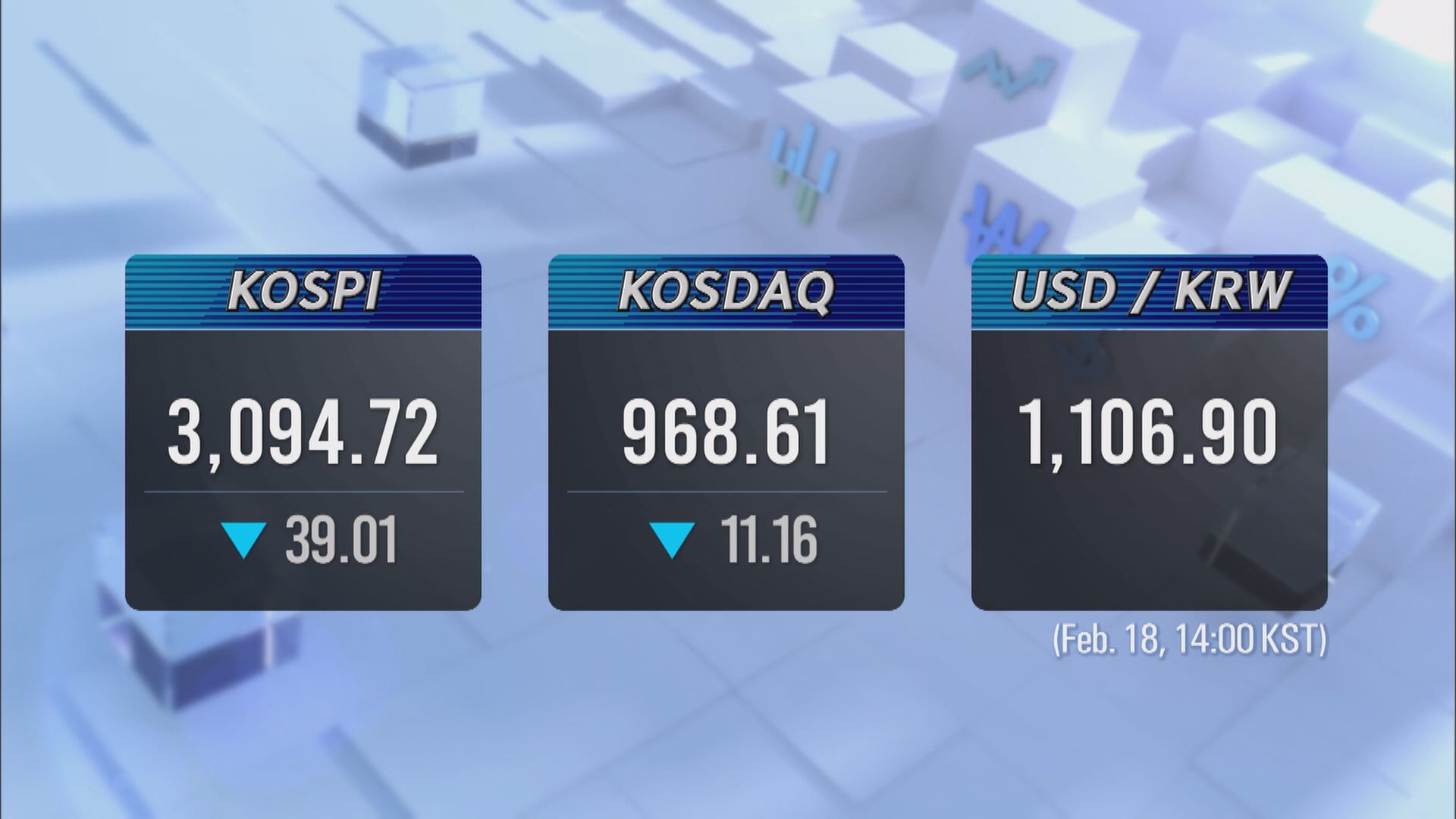HOODED CRANES VISIT CHEONSUMAN BAY
입력 2021.02.18 (15:12)
수정 2021.02.18 (16:47)
읽어주기 기능은 크롬기반의
브라우저에서만 사용하실 수 있습니다.
[Anchor Lead]
Roughly 2,000 hooded cranes have come to Cheonsuman Bay to create a spectacle. The migratory route of the hooded crane has changed in the past few years to substantially boost the number of these graceful birds visiting the country’s largest wintering site for migratory birds.
[Pkg]
The Seosan AB Zone near Cheonsuman Bay. A world-famous winter abode for migratory birds. Hundreds of hooded cranes are searching for food, undaunted by the strong winds. The hooded crane's standout features include a long white neck and a dark body... as well as dark patterns around the eyes that resemble a pair of glasses. This is the unique and lithe hooded crane, Korea’s Natural Monument Number 228. Some 2,000 hooded cranes came to this wintering site around the lunar New Year. The birds flying up north are gathered at Cheonsuman Bay to get ready for their long flights to Mongolia and Russia.
[Soundbite] Kim Shin-hwan(Advisor, Seosan-Taean Federation of Environmental Movements) : "They rest at Cheonsuman Bay while traveling up north. It’s an important place for replenishing their energy and nutrition."
The number of hooded cranes coming to the Cheonsuman Bay area has increased rapidly over the past five to six years. About 14,000 hooded cranes that winter in Suncheonman Bay in Korea and Izumi in southern Japan used to travel right through the center of the Korean Peninsula. But the birds now fly along Korea’s southern and western shores. Avian experts cite climate change as the reason for this phenomenon.
[Soundbite] Han Sung-woo(Ornithologist, Seosan Birdland) : "Big changes in the ecosystem of Haepyeong Wetland in Gumi may have caused the birds to alter their routes to fly along Korea’s western and southern coasts."
The number of hooded cranes in Cheonsuman Bay is expected to reach up to 5,000 by early March, the peak time for winter migratory birds’ northward journey.
Roughly 2,000 hooded cranes have come to Cheonsuman Bay to create a spectacle. The migratory route of the hooded crane has changed in the past few years to substantially boost the number of these graceful birds visiting the country’s largest wintering site for migratory birds.
[Pkg]
The Seosan AB Zone near Cheonsuman Bay. A world-famous winter abode for migratory birds. Hundreds of hooded cranes are searching for food, undaunted by the strong winds. The hooded crane's standout features include a long white neck and a dark body... as well as dark patterns around the eyes that resemble a pair of glasses. This is the unique and lithe hooded crane, Korea’s Natural Monument Number 228. Some 2,000 hooded cranes came to this wintering site around the lunar New Year. The birds flying up north are gathered at Cheonsuman Bay to get ready for their long flights to Mongolia and Russia.
[Soundbite] Kim Shin-hwan(Advisor, Seosan-Taean Federation of Environmental Movements) : "They rest at Cheonsuman Bay while traveling up north. It’s an important place for replenishing their energy and nutrition."
The number of hooded cranes coming to the Cheonsuman Bay area has increased rapidly over the past five to six years. About 14,000 hooded cranes that winter in Suncheonman Bay in Korea and Izumi in southern Japan used to travel right through the center of the Korean Peninsula. But the birds now fly along Korea’s southern and western shores. Avian experts cite climate change as the reason for this phenomenon.
[Soundbite] Han Sung-woo(Ornithologist, Seosan Birdland) : "Big changes in the ecosystem of Haepyeong Wetland in Gumi may have caused the birds to alter their routes to fly along Korea’s western and southern coasts."
The number of hooded cranes in Cheonsuman Bay is expected to reach up to 5,000 by early March, the peak time for winter migratory birds’ northward journey.
■ 제보하기
▷ 카카오톡 : 'KBS제보' 검색, 채널 추가
▷ 전화 : 02-781-1234, 4444
▷ 이메일 : kbs1234@kbs.co.kr
▷ 유튜브, 네이버, 카카오에서도 KBS뉴스를 구독해주세요!
- HOODED CRANES VISIT CHEONSUMAN BAY
-
- 입력 2021-02-18 15:12:34
- 수정2021-02-18 16:47:11

[Anchor Lead]
Roughly 2,000 hooded cranes have come to Cheonsuman Bay to create a spectacle. The migratory route of the hooded crane has changed in the past few years to substantially boost the number of these graceful birds visiting the country’s largest wintering site for migratory birds.
[Pkg]
The Seosan AB Zone near Cheonsuman Bay. A world-famous winter abode for migratory birds. Hundreds of hooded cranes are searching for food, undaunted by the strong winds. The hooded crane's standout features include a long white neck and a dark body... as well as dark patterns around the eyes that resemble a pair of glasses. This is the unique and lithe hooded crane, Korea’s Natural Monument Number 228. Some 2,000 hooded cranes came to this wintering site around the lunar New Year. The birds flying up north are gathered at Cheonsuman Bay to get ready for their long flights to Mongolia and Russia.
[Soundbite] Kim Shin-hwan(Advisor, Seosan-Taean Federation of Environmental Movements) : "They rest at Cheonsuman Bay while traveling up north. It’s an important place for replenishing their energy and nutrition."
The number of hooded cranes coming to the Cheonsuman Bay area has increased rapidly over the past five to six years. About 14,000 hooded cranes that winter in Suncheonman Bay in Korea and Izumi in southern Japan used to travel right through the center of the Korean Peninsula. But the birds now fly along Korea’s southern and western shores. Avian experts cite climate change as the reason for this phenomenon.
[Soundbite] Han Sung-woo(Ornithologist, Seosan Birdland) : "Big changes in the ecosystem of Haepyeong Wetland in Gumi may have caused the birds to alter their routes to fly along Korea’s western and southern coasts."
The number of hooded cranes in Cheonsuman Bay is expected to reach up to 5,000 by early March, the peak time for winter migratory birds’ northward journey.
Roughly 2,000 hooded cranes have come to Cheonsuman Bay to create a spectacle. The migratory route of the hooded crane has changed in the past few years to substantially boost the number of these graceful birds visiting the country’s largest wintering site for migratory birds.
[Pkg]
The Seosan AB Zone near Cheonsuman Bay. A world-famous winter abode for migratory birds. Hundreds of hooded cranes are searching for food, undaunted by the strong winds. The hooded crane's standout features include a long white neck and a dark body... as well as dark patterns around the eyes that resemble a pair of glasses. This is the unique and lithe hooded crane, Korea’s Natural Monument Number 228. Some 2,000 hooded cranes came to this wintering site around the lunar New Year. The birds flying up north are gathered at Cheonsuman Bay to get ready for their long flights to Mongolia and Russia.
[Soundbite] Kim Shin-hwan(Advisor, Seosan-Taean Federation of Environmental Movements) : "They rest at Cheonsuman Bay while traveling up north. It’s an important place for replenishing their energy and nutrition."
The number of hooded cranes coming to the Cheonsuman Bay area has increased rapidly over the past five to six years. About 14,000 hooded cranes that winter in Suncheonman Bay in Korea and Izumi in southern Japan used to travel right through the center of the Korean Peninsula. But the birds now fly along Korea’s southern and western shores. Avian experts cite climate change as the reason for this phenomenon.
[Soundbite] Han Sung-woo(Ornithologist, Seosan Birdland) : "Big changes in the ecosystem of Haepyeong Wetland in Gumi may have caused the birds to alter their routes to fly along Korea’s western and southern coasts."
The number of hooded cranes in Cheonsuman Bay is expected to reach up to 5,000 by early March, the peak time for winter migratory birds’ northward journey.
이 기사가 좋으셨다면
-
좋아요
0
-
응원해요
0
-
후속 원해요
0

















이 기사에 대한 의견을 남겨주세요.